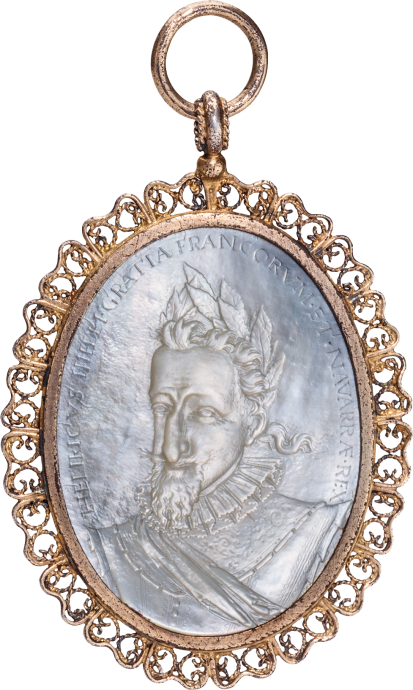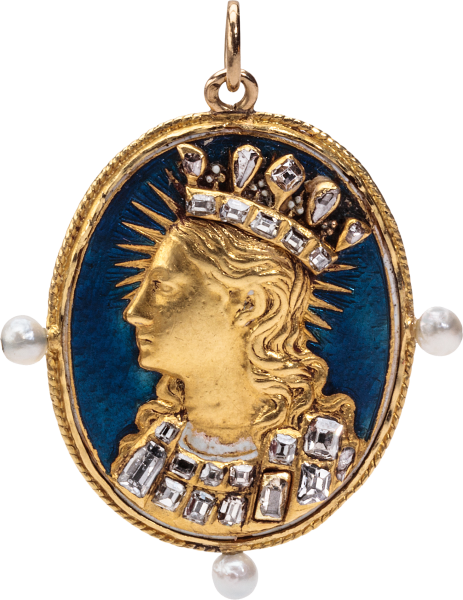


Pendant with Cameo of King Henry IV of France
, France, late 16th century; mount: probably 18th century
Pendant with Cameo of King Henry IV of France
Description
In this shimmering mother of pearl pendant, King Henry IV of France (1553-1610; r. from 1589) is portrayed half-length in three quarter profile view. Wearing a ruff around his neck, armor, and a sash with a necklace draped over his shoulder, he is crowned with a laurel wreath. Capital letters around the rim read HENRICVS IIII. DEI. GRATIA FRANCORVM. ET. NAVARRAE. REX. The reverse is tortoise shell, and the later mount silver gilt.
Engraved gems and medals played a significant role in Henry IV’s artistic patronage. He is directly responsible for the nucleus of the royal collection of the Cabinet des médailles in Paris, which owns nine cameos depicting Henry IV, more than for any other ruler. He not only purchased antique gems but employed his own gem engraver, Julien de Fontaney, who first appears in the royal
accounts in 1590. He named Guillaume Dupré (1574-1643) as his medalist. Although the portrait here resembles medals by Dupré and prints by Thomas de Leu (1560-1612) and Crispin van de Passe de Oude (1564-1637), no exact match has been identified.
The exchange of portraits by sixteenth-century princes and rulers throughout Europe – Charles V, Elizabeth I, Rudolf II, among others – was a well-established diplomatic gesture. In technique and with the identical inscription, the present example resembles a slightly smaller full-profile mother of pearl medal of the king in the Cabinet des médailles.
Literature
Mother of pearl cameos of this period are rare; see the examples of Henry III of France in the Musée du Louvre, Paris (inv. no. OA559) and of Henry IV in the Cabinet des médailles, BnF, Paris (exh. cat. Princely Magnificence 1980, no. 85); and, dated 1596, in the Hermitage, St. Petersburg (exh. cat. Splendeurs de la collections de Catherine II 2000, no. 180/87). Early seventeenth-century examples in sardonyx and chalcedony, also with later frames, are in the Cabinet des médailles, Paris (Scarisbrick 2011, pp. 26-27, 159). Other cameos of Henry IV are in ivory (Musée de la Renaissance, Ecouen, inv. no. E.Cl. 2640) and shell such as a double portrait with his wife Marie de Medici (Babelon 1897, pl. LXXIII, no. 789).
Provenance
Private Collection, France
